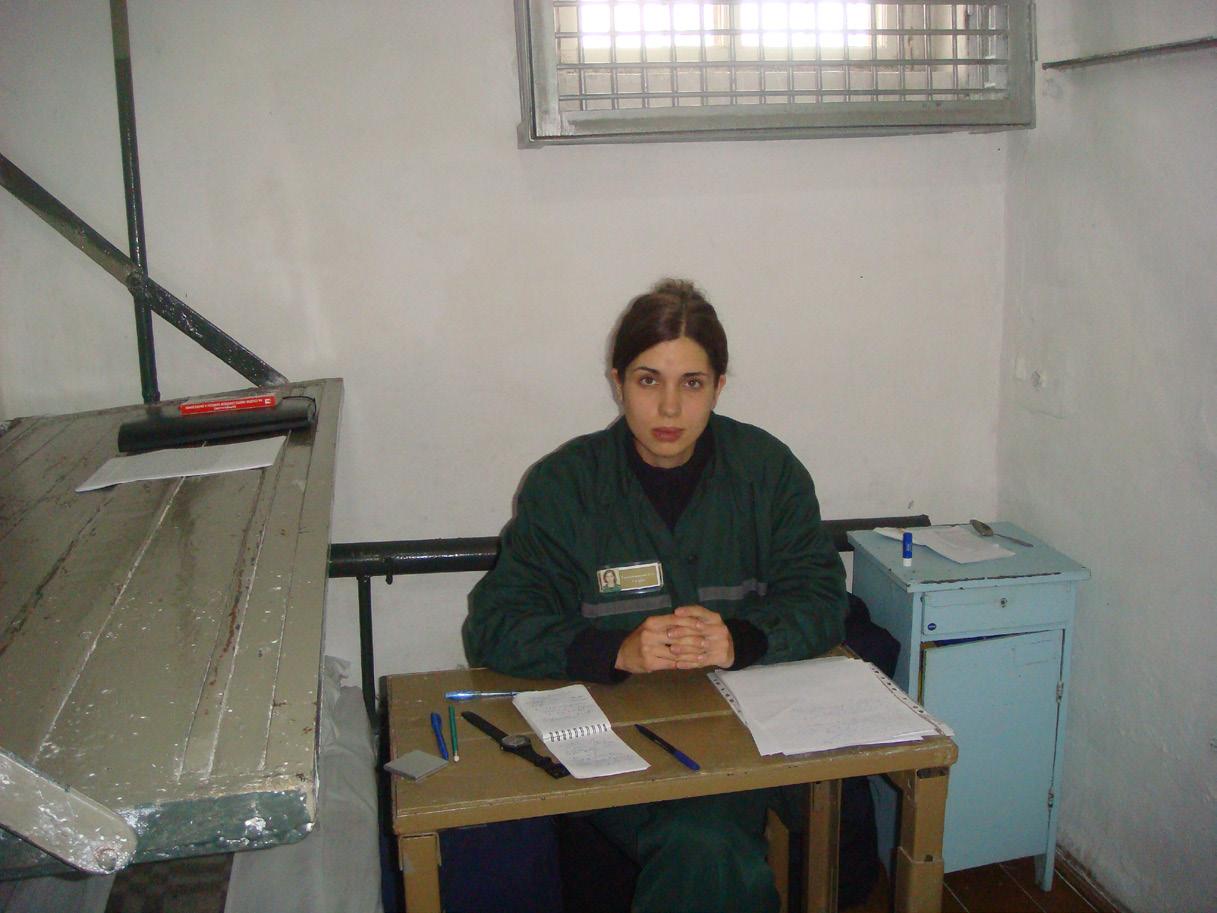
4 minute read
Her Art is Her Weapon
by Tonya Turner Carroll
Nadya Tolokonnikova’s artwork is her weapon against tyranny. Born in Siberia in 1989 at the very moment the door cracked open for artistic freedom, Tolokonnikova’s intellectual enthusiasm hurled her into conceptual art. She began making radical conceptual and performative works in her own activist zone. As Russian society became increasingly oppressive, she wanted to fight for freedom of expression. At 16 years old, Tolokonnikova left Siberia for Moscow to study philosophy and form the performance art group called Voina (War). After experiencing misogyny within Voina, Tolokonnikova left the group and founded the feminist art collective Pussy Riot.
One of the most conceptually brilliant artists I’ve known, Tolokonnikova purposely titled Pussy Riot using an English name in order to be understood by the largest audience possible. Pussy Riot’s earliest protests would last only seconds before the police came and disrupted them. Determined to shine a light on the Russian government’s increasing human rights violations and hypocrisy, Pussy Riot used every possible means of broadcasting their message with maximum impact in the shortest amount of time. They used microphones, electric guitars, and amplifiers they had cobbled together from car speakers; they wore brightly colored minidresses and balaclavas; they shouted and danced. This artistic style resulted in some critics labeling Pussy Riot punk rock musicians. But in fact, Tolokonnikova asserts that she has always been a conceptual artist, utilizing any medium available to her at the time she creates her work.
Every time Pussy Riot staged an art protest in Russia, police would arrive and break up the protest after about thirty seconds. Russian police have arrested Nadya Tolokonnikova more than 70 times, with her arrest after Pussy Riot’s Punk Prayer resulting in a 21-month prison term in a Russian jail and Siberian penal colony. The stay can’t be euphemized. It was excruciating, causing PTSD and severe depression.
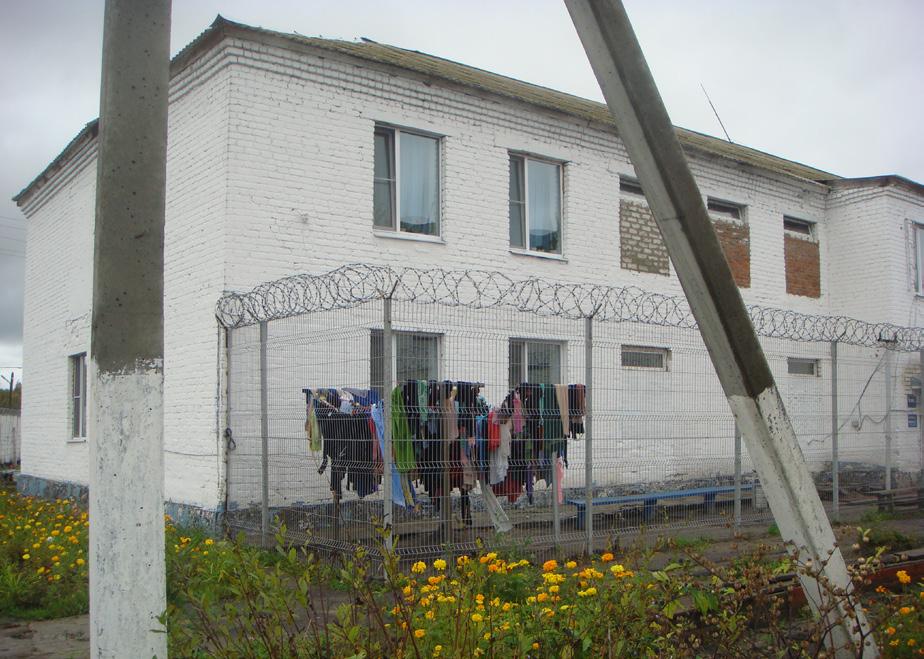
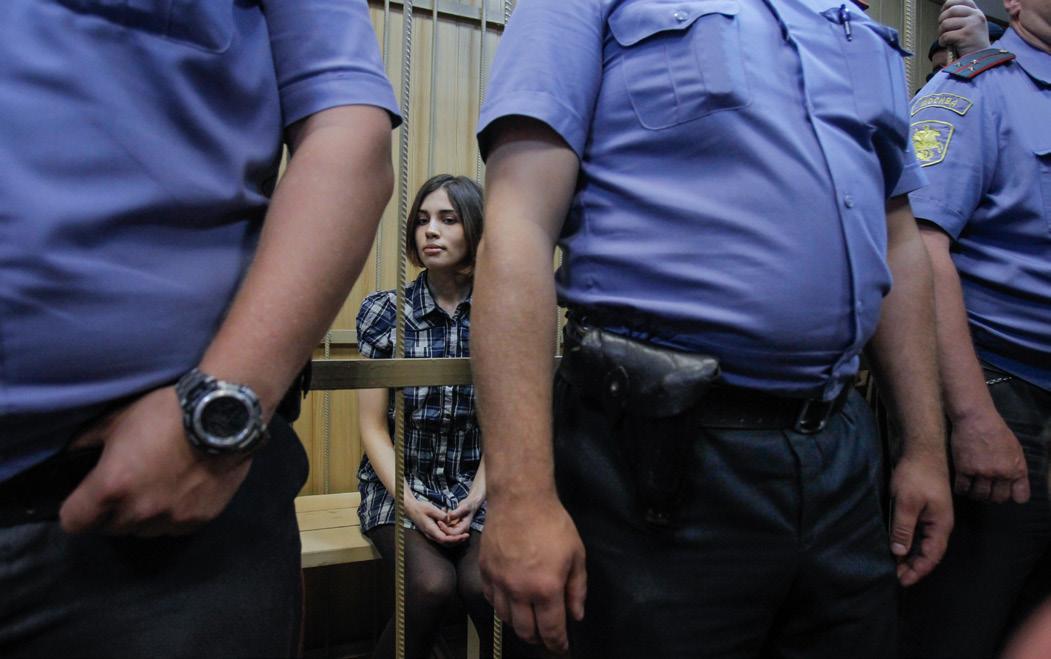
But rather than give up, Tolokonnikova fought back with the truth and art. She created her own opposition news outlet Mediazona, exposing human rights abuses by the Russian government. She made the video art piece “Chaika,” exposing the corruption inside the Russian justice system. She drew cartoons on her prison sentence papers, making it into an artwork titled “Virgin Mary, Please Become a Feminist,” and she bottled and dripped her blood on her official freedom papers for her “Drink My Blood ” artwork. “Embracing the truth, we acknowledge that the path to achieving our goals cannot be traversed without the crucible of pain. It is through the fires of adversity that we forge the strength, resilience, and unwavering determination necessary to transcend limitations and reach the pinnacle of our aspirations,” she writes.
In response to Russia’s diabolical invasion of Ukraine, Tolokonnikova created her largest-scale fully immersive artwork yet, “Putin’s Ashes.” Knowing that Vladimir Putin is superstitious and intimidated by magic and witchcraft, she placed those concepts front and center in her first original art film and score. In a coup de grace, she gathered women who professed deep hatred of Putin, created a ritual in which they burned a large portrait of him, then cast a spell on his ashes and bottled them up. She directed and starred in the filmed performance, then bottled up the resulting ashes, placing them on tiny shelves within her artworks. She made feminine furry frames for these artworks using the sewing skills she was forced to learn in prison to sew police and military uniforms. As part of her Putin’s Ashes immersive installation, Tolokonnikova places Putin’s cremated, denigrated “remains” in a special hell-like tomb all his own, while her film documenting the ritualistic performance shows floor to ceiling, wall to wall, making the balaclava and minidress-donning women look like giant sheroes, delivering civilization from the devil. Michael Carroll studied in Russia during the Soviet era, and he notes that “The Soviets published maps of their country with cities missing and roads not where they actually were. Putin inherited this playbook of deception. Tolokonnikova, like an Aikido master, takes the deception and reorients it to the truth.”

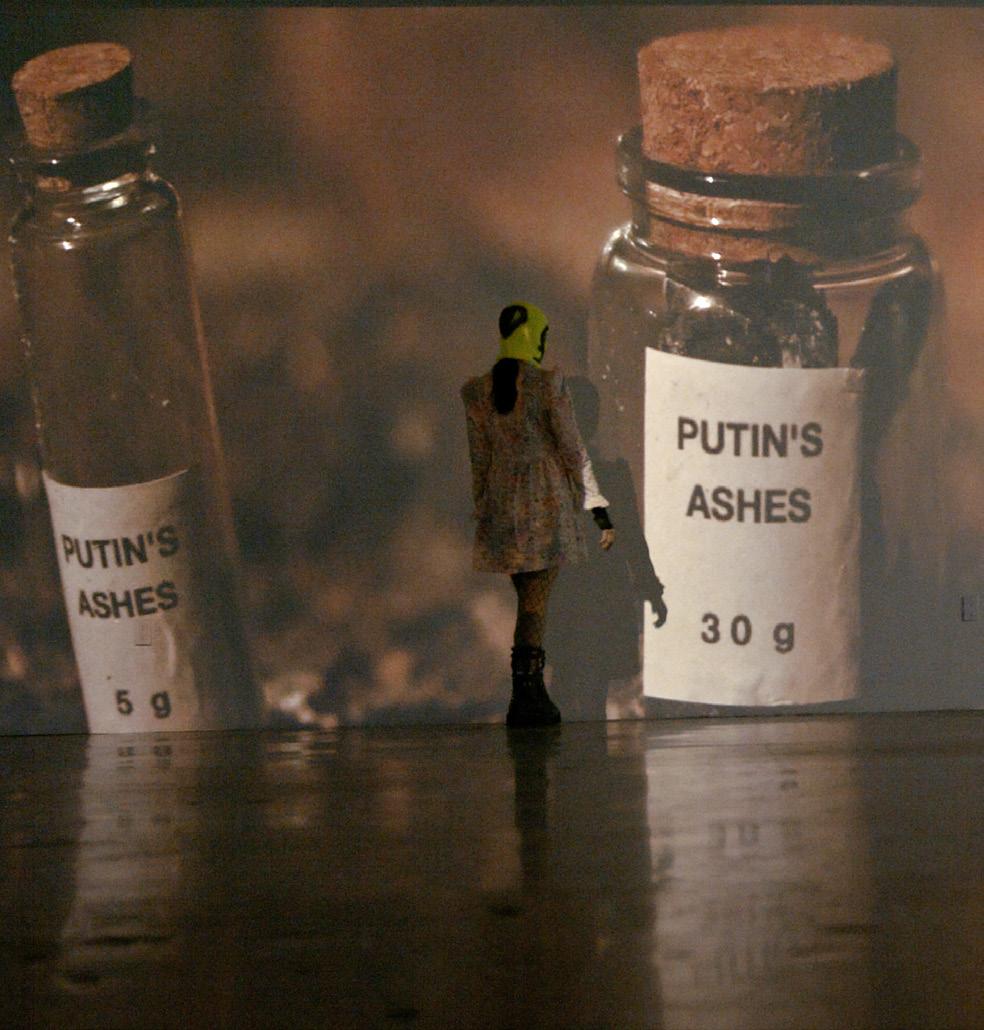
Tolokonnikova got under Putin’s skin so deeply, that he ultimately declared her a “foreign agent” and created a law against “blasphemy” now known as “The Pussy Riot Law.” Tolokonnikova met with U.S. Secretary of State, Anthony Blinken, appeared on U.S. news channels like CNN and MSNBC, and keeps telling her truths through every possible medium.
Tolokonnikova has created two new major series of works for her [CONTAINER] exhibition, both of which show major evolution in her artistic career. Her This Art is a hammer that shapes reality series of conceptual text-based works question perceived reality by contrasting sewing machine parts and teddy bears; positive and negative statements. She channels her nightmares of being impaled by broken sewing machine parts in prison, into beautiful, safely-sewn artworks with pink fluffy frames.
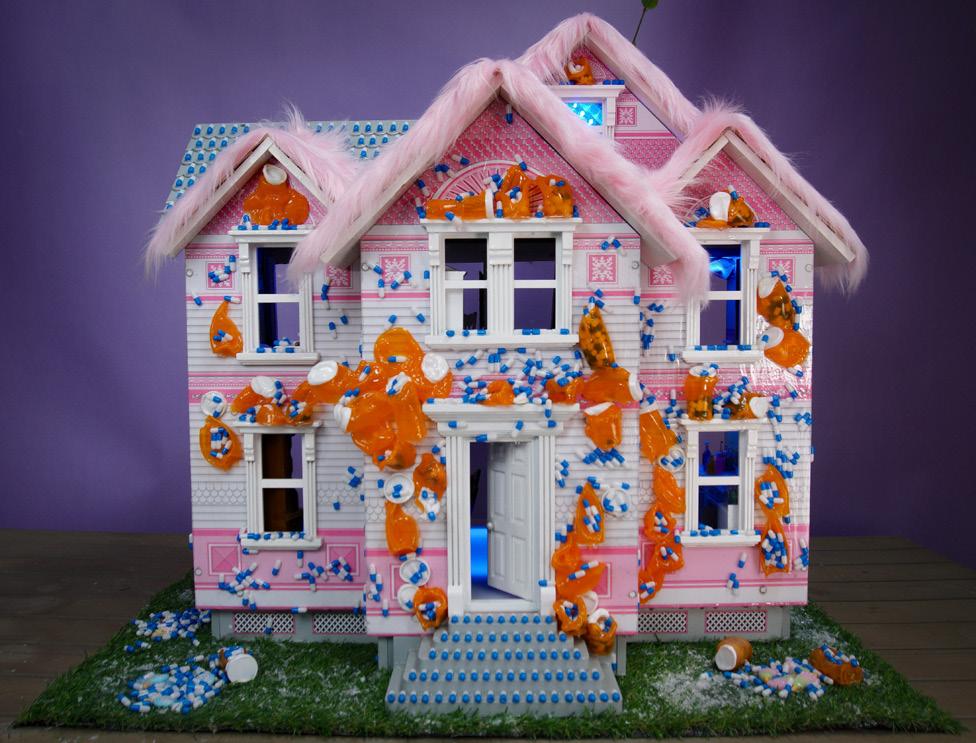
With her “Knife Play ” series, she fashions shivs from prison bars into beautiful objects, with handles made from plastic spoons and wooden bits, wrapped with materials onhand like hair ties, pink ribbon, and clothing parts.

Tolokonnikova’s newest work is her deeply personal, meticulously crafted HAUNTED! multimedia artwork, transforming her PTSD and reliance upon anti-depression medications into an object of introspective beauty. She collaborated with her friend, Bono, to make a spoken word soundtrack for HAUNTED!, which literally changes rage into beauty as does Tolokonnikova’s work.
Looking back to our earliest knowledge of Tolokonnikova and Pussy Riot’s conceptual artworks, it was clear that she would make an indelible mark on the international art world. At only 33 years old, she has already created artworks with the conceptual and technical maturity of an artist who has already lived a full career. Michael and I are honored to collect her work and support her vision of a world where art can change society. That’s our vision, too, and we are thrilled to share with you the brilliant work Nadya Tolokonnikova has created for our [CONTAINER] exhibition.
“Art holds transformative value by transcending boundaries and amplifying unheard voices. It has the ability to challenge norms, inspire dialogue, and ignite collective action, fostering a world where new possibilities and perspectives can flourish.”
-Nadya Tolokonnikova
![Turner Carroll Gallery | [CONTAINER]](https://photo.isu.pub/turnercarrollgallery/photo_large.jpg)






